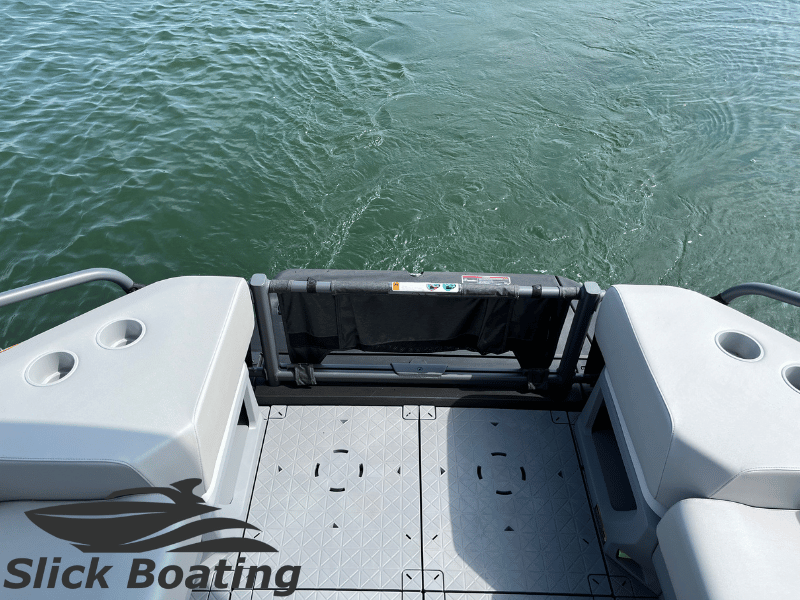Just like any other boat on the market, the Sea-Doo Switch can go in salt water just fine.
You can take your Switch anywhere you would take any pontoon boat. The Sea-Doo Switch is nothing more than a pontoon boat with a Polytec Hull and jet drive. It may sound odd and crazy, but it’s really not.
Just like any other boat, you should get it out of the water after you’re done with it. It’s not a huge deal to leave the Sea-Doo Switch in the salt water, but just like any other boat, you will need to do extra cleaning and more maintenance if you do leave it in the water.
Sea-Doo Switch Needs To Be Flushed
It’s ideal for all boats to be flushed out after riding it in salt water, and the Sea-Doo Switch is no different.
Though, there is one thing unique about the Switch, it has closed-loop cooling.
The engine block of a Sea-Doo Switch never takes in ocean water to cool it and instead uses antifreeze coolant just like a car would. So you don’t have to worry about the engine block insides being exposed to corrosive saltwater.
The bad news is that the Sea-Doo Switch still takes in water to cool and muffle the exhaust, and if you have a 230HP or greater you have a supercharger and the intercooler takes in water to cool it. In other words, you should still flush your Sea-Doo Switch.
Do The Pontoons On The Switch Need To Be Flushed?
Something unique to the Sea-Doo Switch is that the pontoons, or outriggers as some call them, need to be flushed.
It’s not something that needs to be done whole lot, but still must be done.
The pontoons on your Switch are not completely sealed like they are on other pontoon boats. Some water can get in, but it’s not a lot and the Switch will still float just fine.
The video below talks about flushing the toons on your Sea-Doo Switch:
Rough Water
The Sea-Doo Switch is different from other boats and pontoon boats as it uses a Polytec hull and not fiberglass or aluminum.
A Polytec hull is not something new, Sea-Doo has been using it on the Spark since 2014. They later started adding it to more models of PWCs, and now it’s more than half it’s line uses this material.
To put it simply, it’s plastic that has been reinforced. That is how many boats are made, they use resin and reinforce with fiberglass. Plastic is a type of resin, and it’s a part of one big family.
What’s different is how Polytec responds, for example, how a plastic plate vs a glass plate responds. Fiberglass has less give and will snap, while Polytec has more give like plastic and bounces back. In a way, Polytec is more forgiving, but can still break just like any other fiberglass boat if pushed too far, or you run into sharp things like rocks.
Are Other Boats Made Of Plastic?
Fiberglass and aluminum has been the go-to material for making boats for decades, so seeing someone making what is basically a plastic boat seems a bit off-putting to some.
You also don’t see other manufacturers using it, mostly because Sea-Doo has the patents on lockdown. If Sea-Doo didn’t have it on lockdown, you would see Polytec boats flood the market because of how cheap and durable it is. Half the reason why the Switch is priced so nice is because of Polytec.
Sea-Doo has really figured something out, and it pisses off other manufacturers. And you bet Sea-Doo is going to ride that horse as long as they can and get leaps and bounds better than the competition once they find some loop-hole in the patent.
A plastic hull pontoon just makes sense. It’s modular and easier to fix and replace compared to aluminum or other fiberglass boats. You can even customize it more with different color panels and make it more future-proof with modular connection points.
It’s the future of boats, so long as other boat manufacturers can figure out a work-around on the patents.
